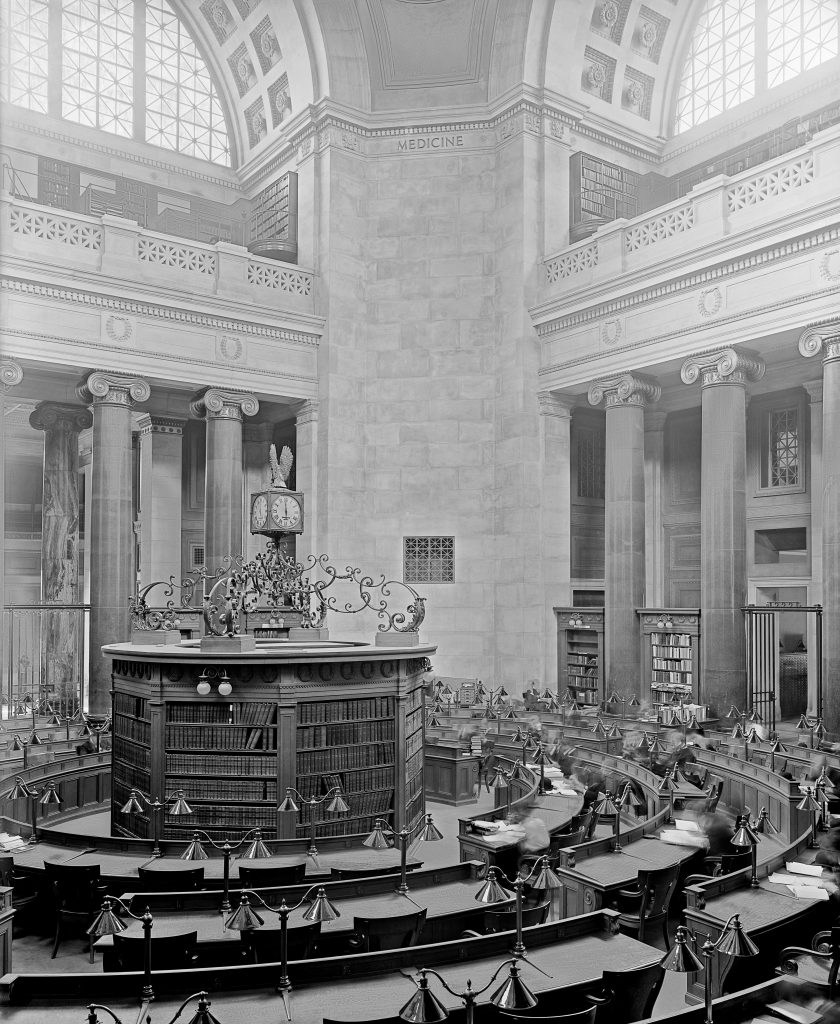Working from home (and via Zoom) means that we don’t get to see students rushing across campus to get to classes, clustered at reading room tables, or sitting on the steps of Low Library. Columbia librarians are discovering new and innovative ways to reach our now all-remote users, which is part of a long and proud tradition of providing user-focused library services. Once upon a time, Low Library (or the Library of Columbia University) offered a novel approach to its spaces and the services provided to its users.

When the Library of Columbia University (now known as Low Memorial Library) opened in 1897, it featured one of the “most advanced library arrangements of the time.” (Passanti, 78) The central Rotunda or main reading room offered a grand studying space for undergraduates. Reference volumes were readily available in the book shelves around the room (in between the columns) and in the circular shelves in the center of the room. For additional book requests, students would complete a form using the information from the card catalogue (a literal card catalogue, to the west or to right of this photograph) and these would be paged from the undergraduate or central stacks located beneath the reading room. The higher levels (now the third and fourth floors) were designated for graduate students and researchers. These users could enter the stacks and use discipline-specific reading rooms or even study spaces in the stacks. In addition to the main collections, the Library also included specialized libraries. The main room along the north wall was the law library and the east side of the building was devoted to the Avery art and architectural library (before there was an Avery Hall).
This collection of spaces and libraries all within the same building was not only ahead of its time, it has in some ways remained the model at Columbia. The Columbia University Libraries (CUL) are still a mix of spaces and collections (and collections within collections) spread out on campus and online because our collections and our users’ needs keep growing and changing. The law library outgrew its space and moved to Kent Hall in 1911, and is now in the Jerome L. Greene Hall (1961); the architecture library moved to Avery Hall (1912); and the main collection moved to South Hall, now Butler Library, in 1934, and eventually, parts of the collection started to go to ReCAP in 2000.
During this time of remote access, to be honest, we miss Low Library. Over the next few weeks, we will share some of our favorite facts, stories and photos about this iconic building. We hope this helps bring all of us a little closer to campus.
Passanti, Francesco. “The Design of Columbia in the 1890s, McKim and his Client.” Journal of the Society of Architectural Historians, Vol. 36 No. 2, May 1977, 69-84.